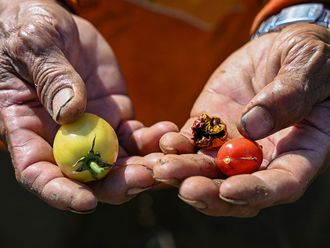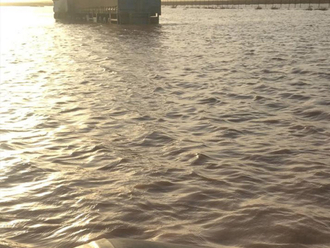Roxas City: A full year after Haiyan devastated a sizeable portion of the country, those who survived look to the future with a better quality of life.
“They say that in crisis there is always an opportunity … The day after November 8, 2013 was auspicious, it was the start of a new life after Yolanda (Haiyan). After Yolanda, we began the first day of our new life,” Governor Victor Tanco of the province of Capiz said.
“We look forward with an opportunity to make life better for the people … We now would confront the future better equipped from the lessons we had gained from the calamity,” he said in a speech he delivered Saturday before townsfolk and members of the international aid community in Roxas City, the provincial capital.
It has been a full year since Haiyan, (locally known as Typhoon Yolanda), caused massive destruction in the Visayan Islands in Central Philippines. Considered the most powerful cyclone to hit the planet in recent decades, the typhoon left at least 6,300 dead and dozens still missing while millions of homes were totally and partially destroyed.
Haiyan had affected the regions of Southern Tagalog, Eastern Visayas, Western Visayas, Central Visayas as well as the MIMAROPA.
“As we build back our lives we now face the future confident that the lessons we learnt had equipped us well for the challenges ahead,” Tanco said. Capiz is in the Western Visayas region.
Capiz, like other province in the Visayas had suffered much from Haiyan’s powerful 280km/h winds. Although some of its infrastructure was damaged, its economy was able to get back on its feet quickly compared with other provinces like Leyte and Samar in the Eastern Visayas region.
Since Haiyan struck, Western Visayas and all the other regions affected by Haiyan had invested much in preparing its people in confronting similar calamities in the future. Foreign nongovernment groups like the International Organisation for Migration (IOM), the ACF (known worldwide as Action against Hunger), the Care Foundation, and among a host of NGO had formed five separate ‘cluster committees’ tasked with their own areas of concern.
These clusters are the shelter, health, camp coordination and management, protection and communication with communities. For example, one of IOM’s task was to provide training at the village level on what to do during disaster events.
“Each family has an appointed head that would be given training on what to do during emergencies,” Arshad Rashid, head of the sub-office of the IOM in Roxas City told Gulf News.
Spanish Isabel Ordonez of ACF told Gulf News in a separate interview that the relief workers would be in the Philippines until the end of December 2015.
“After rehabilitation phase, we would be shifting to reconstruction phase,” said Ordonez.
On the part of local executives like Tanco, they are grateful that foreign agencies are taking an active part in rebuilding areas of the country ravaged by Haiyan.
“After suffering much from the effects of the super typhoon, we are glad are now helping us, not just rebuild, but build back better,” Tanco said.
“Joining hands with international organisations, we are making the typhoon-devastated communities better by building them back and providing residents with better quality of life than they had before,” Tanco said.
“We would now considered by the world as a model for resilience that countries susceptible to climate change wants to emulate,” Tanco added.












